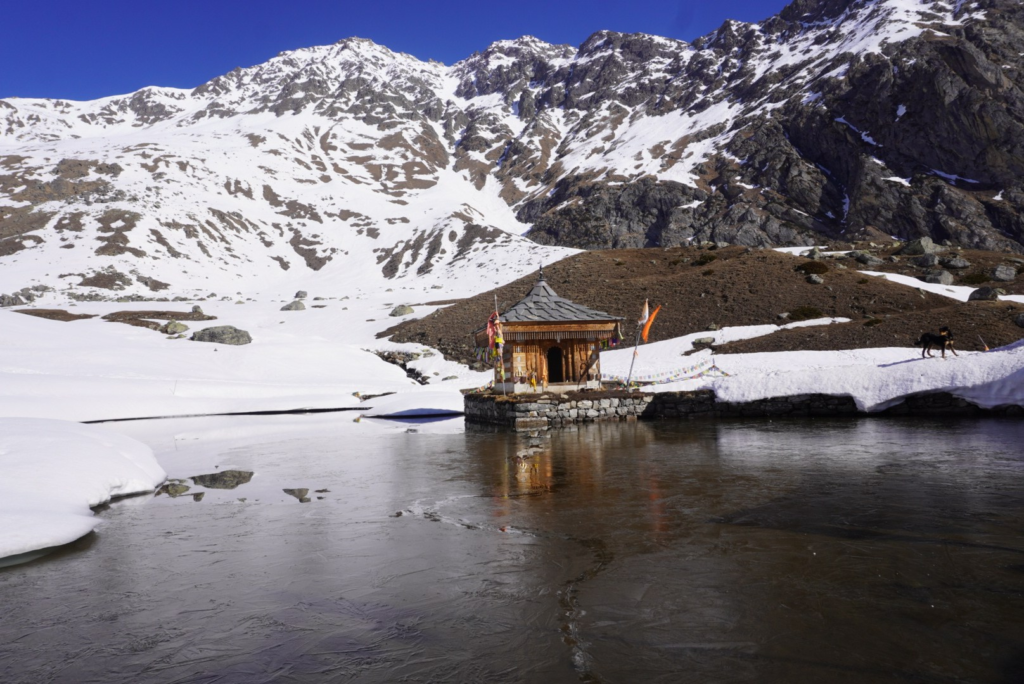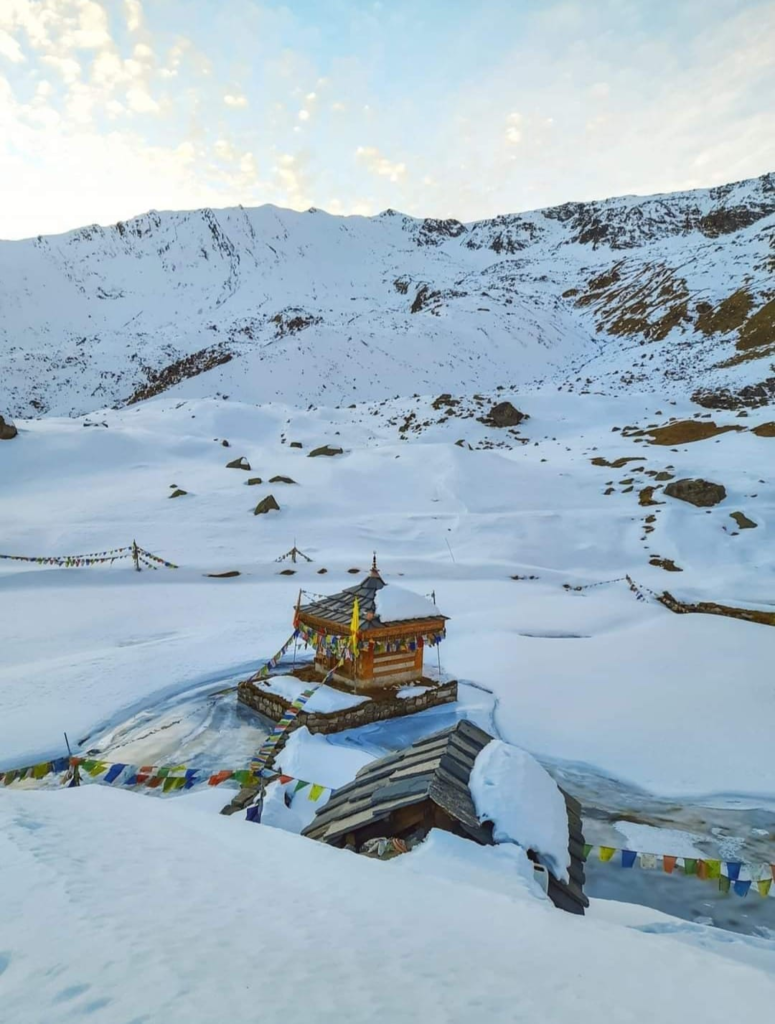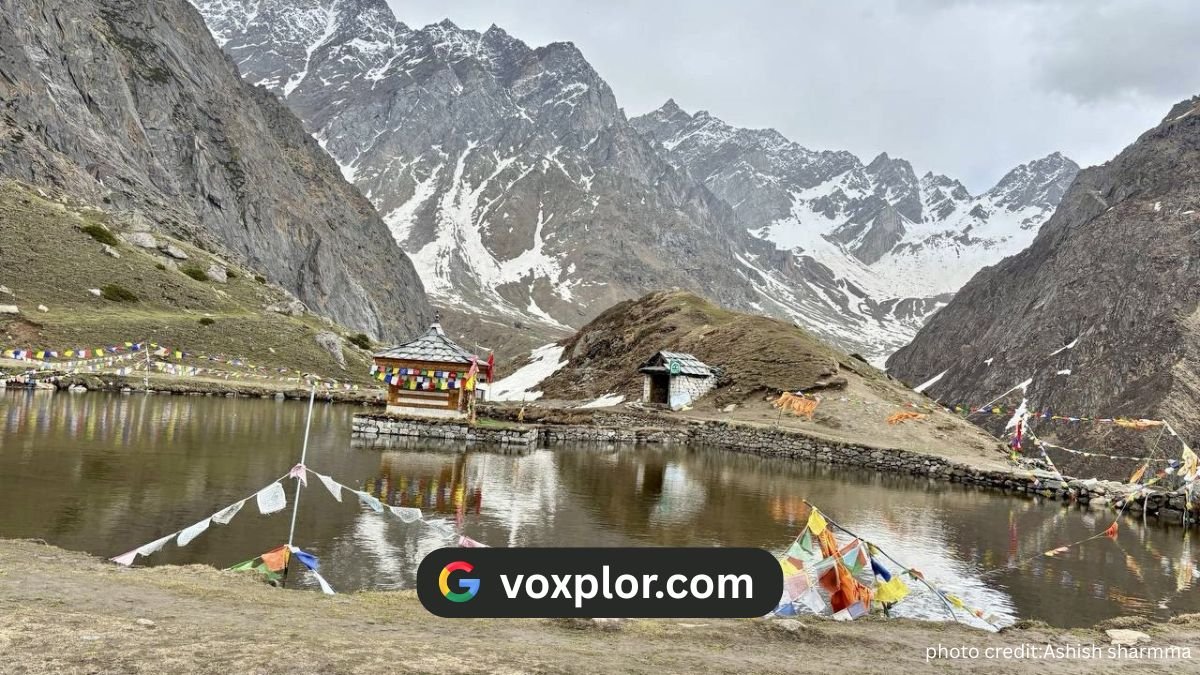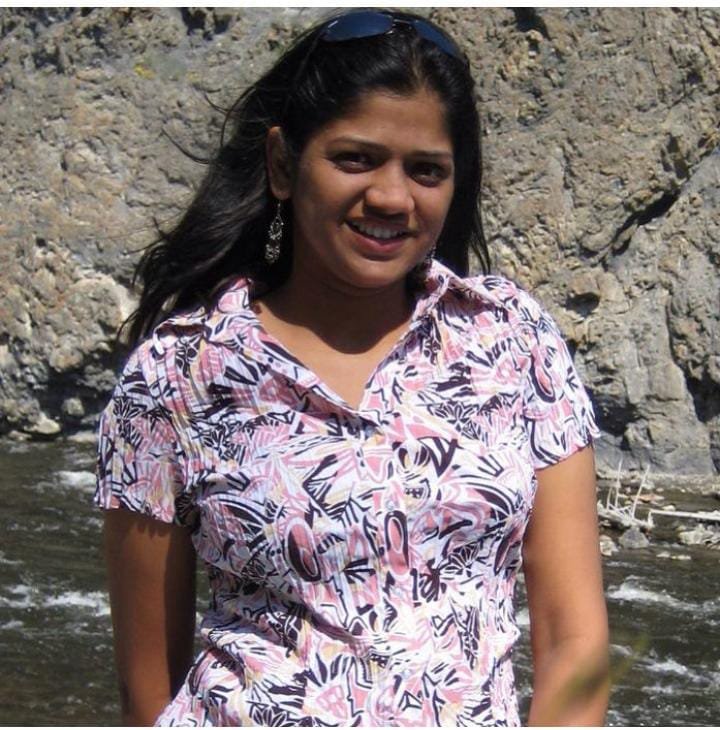Some treks are about the challenge. Some are about the views. And some, very rarely, are about a feeling—a deep, ancient resonance that stays with you long after you’ve washed the trail dust off your boots. The Yulla Kanda trek is one of those rare journeys.
I’ve been privileged to walk many trails in the Indian Himalayas, from the crowded paths of Uttarakhand to the stark landscapes of Ladakh. But there’s a reason I keep coming back to the hidden valleys of Kinnaur. Tucked away from the mainstream trekking circuits, the trail to Yulla Kanda is more than just a walk; it’s a pilgrimage to a sacred lake, a visit to the world’s highest Krishna temple, and a profound immersion into a culture that seems to have been forgotten by time.
This isn’t just another guide. This is my logbook, filled with on-the-ground tips, honest advice, and the stories I’ve collected over multiple journeys to this incredible altitude. If you’re looking for an adventure that touches your soul as much as it tests your legs, you’ve come to the right place. Let’s get you ready for the trek of a lifetime.
About the Author:Hi, I’m V. For the last decade, I’ve been a full-time travel blogger and trek leader, exploring the most remote corners of the Himalayas. My passion lies in discovering and documenting trails that offer a genuine connection to nature and culture. The Kinnaur region holds a special place in my heart, and after leading three groups on the Yulla Kanda trek, I’ve created this guide to share everything I’ve learned.
Yulla Kanda Trek: Quick Facts At-a-Glance
| Attribute | Details |
| Trek Distance | Approx. 24 km (12 km each way) |
| Maximum Altitude | ~15,000 feet (4,572 meters) |
| Difficulty Level | Moderate (Suitable for fit beginners and intermediates) |
| Start/End Point | Yulla Khas Village, Kinnaur, Himachal Pradesh |
| Ideal Duration | 3 to 4 days (ex-Yulla Khas village) |
| Best Season | Mid-May to June & September to Mid-October |
| Nearest Town | Tapri / Urni |
Why Yulla Kanda? A Trek That Resonates Differently
Let’s be honest, Himachal Pradesh is not short on spectacular treks. So, what makes this one so special? For me, it’s the unique blend of spirituality, raw nature, and authentic Kinnauri culture.
The entire Yulla Kanda Trek is steeped in mythology. A local legend, whispered by villagers over a cup of warm chai, says the sacred lake at the top was created by the Pandavas during their exile. Perched on its banks is a humble, stone-and-wood temple dedicated to Lord Krishna. At this altitude, religion feels less like a ritual and more like a profound connection to the elements. During the Janmashtami festival, the entire valley comes alive as locals make the pilgrimage, a sight that is truly a privilege to witness.
Beyond the spirituality, the landscape is simply breathtaking. The trail is a story in itself—it begins in dense forests of pine and deodar, where sunlight filters through the canopy, then abruptly opens up into vast, rolling meadows that would make a landscape photographer weep with joy. The final ascent reveals a dramatic alpine theatre, with the emerald lake cradled by snow-dusted peaks. It’s a reward that feels earned in every sense of the word.
Sandakphu Phalut Trek Guide: Route, Weather, Height & Best Time to Visit

The Journey, Day by Day: My On-the-Ground Itinerary
Many itineraries rush this Yulla Kanda Trek. I believe in taking it slow, letting your body acclimatize and your mind absorb the surroundings. Here’s the 4-day plan I recommend and follow with my groups.
Day 1: Arrival and Acclimatization in Yulla Khas Village
Your adventure begins in Yulla Khas, a quintessential Kinnauri village clinging to the mountainside. The journey to get here is an experience in itself, with stunning views of the Sutlej River carving its way through the valley.
How to Reach: From Shimla or Chandigarh, take a bus or taxi towards Reckong Peo and get down at Tapri. From Tapri, you can hire a local taxi for the final scenic (and bumpy) ride to Yulla Khas.
My Advice: Don’t rush. Arrive by afternoon. Check into a traditional homestay—the hospitality is legendary. Spend the day walking around the village, interacting with the locals, and admiring the intricate woodwork on their homes. Drink plenty of water and let your body get used to the altitude (around 8,900 feet). This day is crucial for a successful trek.
Day 2: Yulla Khas to the Base Camp (The Real Trek Begins)
- Trek Distance: Approx. 8 km
- Time Taken: 5-6 hours
After a hearty Kinnauri breakfast, we begin the actual ascent. The first couple of hours are a steady, sometimes steep, climb through a magical forest. The air is thick with the scent of pine, and if you’re quiet, you might spot a Himalayan Monal, with its iridescent plumage.
Around halfway, you’ll reach a small clearing with a spring. This is a perfect spot to rest and refill your bottles with icy, fresh mountain water. From here, the tree line begins to recede, and the trail opens up into stunning alpine meadows. This section is my favorite. The sense of space is immense, with 360-degree views of the surrounding peaks.
Our destination is the base camp, a sheltered meadow that serves as our home for the night. Setting up camp here as the sun sets, turning the sky into a canvas of orange and pink, is an unforgettable experience.
Blogger’s Tip: The weather can change in a heartbeat in these meadows. Even if it’s a sunny day, always keep a windcheater and a light rain jacket in your daypack. You’ll thank me later.
Day 3: Summit Day! Base Camp to Yulla Kanda Lake and Back
- Trek Distance: Approx. 8 km (round trip)
- Time Taken: 6-7 hours
This is the day we’ve been waiting for. We start early, just as the first light hits the peaks. The climb from the base camp is the most challenging part of the trek. It’s steep, and the altitude makes itself known. The key is to go slow and steady—”dheere, dheere” as the local guides say.
The final push brings you over a ridge, and then you see it. The Yulla Kanda lake. It’s not a massive lake, but its beauty is profound. The still, emerald waters perfectly reflect the sky and the surrounding rocky crags. And right there, on its edge, sits the simple, powerful Krishna temple.
Take your time here. The atmosphere is electric with peace and spirituality. Sit by the lake, visit the temple, and just absorb the sheer majesty of being at 15,000 feet. After spending an hour or two soaking it all in, we begin the careful descent back to our base camp. The descent is faster but can be tough on the knees, which is where trekking poles become your best friends.
Day 4: Descent to Yulla Khas and Departure
- Trek Distance: Approx. 8 km
- Time Taken: 3-4 hours
Waking up at the base camp one last time, we enjoy a final mountain breakfast before starting our descent. The journey back to Yulla Khas feels surprisingly quick. The familiar path unfolds before you, and you’ll notice details you missed on the way up.
We usually reach the village by lunchtime. From here, you can either spend another night soaking in the quiet village life or begin your journey back to Tapri and onward, your heart and memory cards full.

Decoding the Yulla Kanda Trek Difficulty: An Honest Assessment
On a scale of easy to strenuous, I would firmly place the Yulla Kanda trek in the moderate category. But what does that really mean?
- For Fit Beginners: If you have a good level of cardiovascular fitness (you can run 5 km in about 30-35 minutes) and have a spirit for adventure, you can do this trek. The daily walking distances are not huge, but the altitude gain is significant.
- For Experienced Trekkers: You will find the trail enjoyable and the challenge manageable. It serves as a fantastic acclimatization trek for more strenuous expeditions in the region.
The main challenges are the altitude and the steep ascent on summit day. Don’t underestimate them. Proper acclimatization on Day 1 is non-negotiable, and a slow, steady pace throughout is the mantra for success.
My Essential Packing List: What I Packed & What I Wished I’d Brought
Packing smart is key to an enjoyable trek. Here’s a tried-and-tested list based on my experiences.
Clothing (Layering is crucial):
- Trekking T-shirts (3): Quick-dry material is best.
- Fleece Jacket (1): Your primary warm layer.
- Down/Padded Jacket (1): Essential for the cold evenings and early mornings at camp.
- Trekking Pants (2): One for trekking, one for the campsite.
- Waterproof Outer Layer (1): A good quality rain jacket and pants are a must.
- Thermals (1 set): For sleeping in and for summit day.
Footwear:
- Trekking Shoes: Waterproof, with good ankle support and a sturdy grip. Make sure they are well broken in.
- Socks (3-4 pairs): A mix of thick woolen and synthetic trekking socks.
Gear & Essentials:
- Backpack (50-60 litres): With a rain cover.
- Trekking Poles: An absolute lifesaver for the steep sections, especially the descent.
- Headlamp/Torch: Critical for the campsite.
- Water Bottle/Hydration Pack (2 litres): Staying hydrated is the best way to combat altitude sickness.
- Sun Protection: Sunscreen (SPF 50+), sunglasses (UV protected), and a sun cap/hat. The sun is harsh at altitude.
- First-Aid Kit: With your medications, plus basics for cuts, blisters, headaches, and stomach issues. Include Diamox for altitude sickness if you are prone to it (consult your doctor first).
- Snacks: Energy bars, nuts, and chocolates for that quick energy boost on the trail.
What I Wished I’d Brought on My First Trip: A power bank. The homestays have electricity, but at the base camp, your gadgets will die. A fully charged power bank is a lifesaver for your camera and phone.
Frequently Asked Questions (From My DMs)
Is there mobile network connectivity on the trek?
You’ll get patchy BSNL and Jio connectivity in Yulla Khas village. Once you start trekking, consider your phone a camera. There is no network at the base camp or the lake. This is a digital detox trek!
Are there toilets on the trail?
In Yulla Khas, the homestays have basic but clean toilets. On the trek, you will be using designated toilet tents set up by your trekking team. Be prepared for a rustic experience.
Can I do this trek solo?
While it’s technically possible, I strongly advise against it for safety reasons. The weather is unpredictable, and the trail is not well-marked in some sections. It’s best to go with a local guide or a small group.
What is the food like?
In the village, you’ll eat simple, delicious, and organic Kinnauri food—dal, rice, local vegetables, and thick rotis. On the trek, expect nutritious and easy-to-digest meals like khichdi, porridge, soups, and pasta.
Final Thoughts: A Trail That Calls You Back
The Yulla Kanda trek doesn’t have the commercial fame of some of its Himalayan cousins, and that is its greatest strength. It remains a raw, authentic, and deeply spiritual journey. It’s a trek that challenges you physically, rewards you visually, and connects you to a side of Himachal that is pure and powerful.
As you stand by that serene lake, the wind whispering ancient stories and the great Himalayan peaks standing guard around you, you’ll understand why this trail is so much more than just a destination. It’s a feeling. And it will call you back again and again.
Happy trekking!
– V


